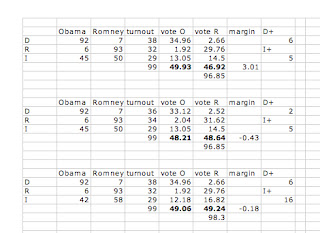One thread in the conversation is that the tax rates will rise from the the Bush era rates back to the Clinton era rates and Democrats state that the Clinton era was an economic boom time. But will the Obama administration and his allies in Congress also lobby for Clinton era spending levels?
Indeed, revenue during the Clinton era ranged from 17-20% of GDP. I'm not an economist so I don't know how much of the rise in revenue was due to the increased tax rates and how much was due to the economy booming.
The spending during that same period ranged from 21-18%. Spending declined as Clinton worked with the GOP Congress to reduce overall spending of which a certain amount was the post-Cold War defense draw down.
Fast forward to where we are now where any deal on the Fiscal Cliff will probably involve an increase in taxes. The current talking point is tax rates should rise to Clinton era levels for those $250,000 and above. As such, unless we go over the fiscal cliff, we actually aren't getting back to the Clinton era rates Democrats lionize since those below $250,000 would be under Bush era tax rates.
Under a rosy economic boom scenario, revenue might rise to 20% of GDP which was at the top of the Clinton boom times.
What about the spending side?
We are now at 23-25% GDP. Thus, we would still run deficits of 3-5% of GDP. US GDP is about $15 trillion; therefore, $450-750 billion deficits will result.
If we want Clinton era tax revenues, we also need Clinton era spending levels, if we want to begin to make a dent on the Federal debt. The first part of this equation (increasing tax revenues) results in cheers. The second part of this equation (decreasing spending) results in the sound of crickets.
Update: Just came across this item from Dan Mitchell at Cato. Excerpt: You may have noticed that the White House used 20 percent of GDP as a benchmark in its chart, apparently because we should strive for the fiscal policy we had in Bill Clinton’s second term. I might be willing to take them up on that offer, so long as they’re also willing to accept Bill Clinton’s spending levels. More from Cato about the Clinton years.















